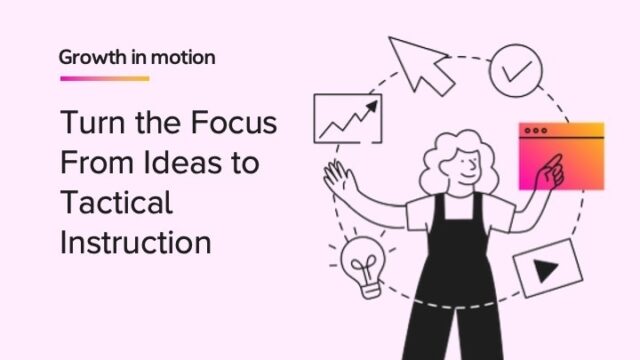
How do you teach to a diverse group of learners in the classroom? Small-group instruction is a powerful and effective tool to differentiate instruction and support all students. In fact, research shows that through effective small-group instruction, students can see great success. Read to find tips to successfully implement small-group instruction in your class.
Why is Small-Group Instruction Effective?
Small-group instruction calls for teachers to pull aside a group of students to introduce or review a concept in any subject, whether it be English language arts or math. Meeting with a smaller group of students allows teachers to work with students on a more individualized level. Teachers can then closely monitor student progress and use those observations to tailor lessons and target a particular skill or modify the pace of instruction. This can be particularly helpful to multilingual learners, who may need additional language support. Additionally, small-group instruction can serve as intervention—teachers can address learning challenges and pre-teach or reteach concepts—or it can serve as enrichment for students ready for more advanced concepts.
Small-group instruction also gives teachers the time to provide individualized feedback. Within a small group, teachers can meet regularly with students to discuss goals, challenges, and accomplishments. Plus, a small-group setting can put students more at ease to ask questions and participate.
Tips for Effective Small Group Instruction
To set up effective small-group instruction in your class, follow these teaching tips.
Assess Where Students Are
Using data guides small-group instruction, as it is used to place students in their appropriate small group and determine skills to teach. So, prior to starting a small group, it is essential to assess students’ skills. Use formative assessments to see where students are coming in.
Group Students Flexibly
Form flexible small groups of two to six students based on assessment results, along with students’ academic interests and academic needs. Keep in mind that these groups are fluid and students may need to be regrouped as they progress throughout the school year. Use observational data from small-group lessons to reevaluate groups.
Set Clear Learning Objectives
Each small group should have specific learning objectives to work on and goals to work towards. Refer to the collected data to determine what skills to focus on and what tasks to do during small group. For example, if students in one group need help with phonics, they can engage in word building with letter tiles. But if another group needs help with reading comprehension, students can learn skills like retelling.
Establish a Small-Group Routine
While the teacher is engaging a few students in a small-group lesson, the rest of the class is working independently. So routine is key in running small groups effectively. Take the time at the beginning of the school year or whenever you begin implementing small-group instruction to model what will happen during a small-group lesson. For example, show students where small groups will take place and what tools they may be using. Also demonstrate to students what will they be doing when they aren’t in small groups, for example walk them through the different learning centers. During this modeling, be sure to review the following routines and expectations too:
- How long will small-group lessons be?
- How should students move in and out of a small group?
- What is the expected noise level during small-group time?
- When is it okay to interrupt the teacher a during small-group lesson?
Practice these routines regularly so that small-group time can run smoothly.
Provide Ongoing Assessment and Feedback
Continue monitoring student progress and understanding using different assessments such as exams, quizzes, or exit tickets. Take notes during small groups and record observations. What notes you take will depend on the subject. If your students are practicing reading in small groups, you might want to write down what words students are mispronouncing. This information can help better tailor lessons to meet students’ needs. For example, if students are mispronouncing words with constant cluster -tch, you can lead a small-group word study activity focusing on words with that cluster. Share these notes with students and check in with them to learn what skills they would like to work on.
Small-Group Instruction Examples and Activities
Below are examples of how small-group instruction can look like and activities to engage students in during small-group instruction.
1. Think Alouds
Think alouds are a strategy used to model to students the thought solving process when undertaking a task. During a think aloud, the teacher is verbalizing what they are thinking and doing. Think alouds can be used during small-group math instruction to show students how to approach a word problem or during small-group reading instruction to teach how to construct meaning from the text. When the teacher is thinking aloud, they may also pause when something is unclear, reread a part of the text, and use context clues to figure out vocabulary. An example of using think-aloud strategy during a small-group reading instruction would be a teacher choosing a short passage to target a comprehension skill, like author's purpose. While reading, the teacher asks questions related to that skill. For example, they would ask aloud, "I wonder why the author used this language?" Afterwards, students would debrief and discuss what strategies were used when reading. Later, in the small group, students would practice the think-aloud strategy themselves with their peers. In the future, students will be able to use this strategy in their head as their working through a math problem or reading a story.
2. Learning Games
Engage students in skills practice with a learning game during small-group instruction. Popular games like bingo can be modified to review a literacy skill, like reading high-frequency words, or a math skill, like building math fact fluency. Use the following printable bingo board during your small-group instruction. For example, ask students to write doubles addition and subtraction sentences, like 1+1, 2+2, 6-3, and 8-4, throughout their blank bingo board. Call out different responses like, "what number sentence makes 4?" Then students can work on their doubles addition and subtraction facts and cover up which number sentence is equal to that number.
3. Graphic Organizers
Use graphic organizers during a small-group lesson to help students organize the information they are learning. For example, during reading groups, have students fill out a story map. This way students will learn how to retell a story and identify the main elements of a story, like main characters, problem, and resolution.
4. Writing Conferences
Support students through the writing process during small-group instruction. Conduct writing conferences and teach writing mini-lessons to show students a specific writing strategy as well as a mentor text.
5. Book Groups
Group students by reading level and lead book groups. When students participate in book groups, they have an opportunity to build reading comprehension skills and talk about what their reading in a student-led setting. This small-group activity works best for ELA, but can potentially be used in any subject to make cross-curricular connections. For example, Into Math has math readers that students can use to practice both math and literacy.
Small-group instruction serves as a valuable instructional tool. Through thoughtful small-group planning and preparation, you can better address the needs of every learner.
***
HMH Into Reading has everything teachers need in one place to facilitate systematic and explicit whole- and small-group reading instruction.
The HMH Into Math curriculum includes whole-group, small-group, and partner work to propel growth in every student.
Get our free guide to differentiated instruction.















